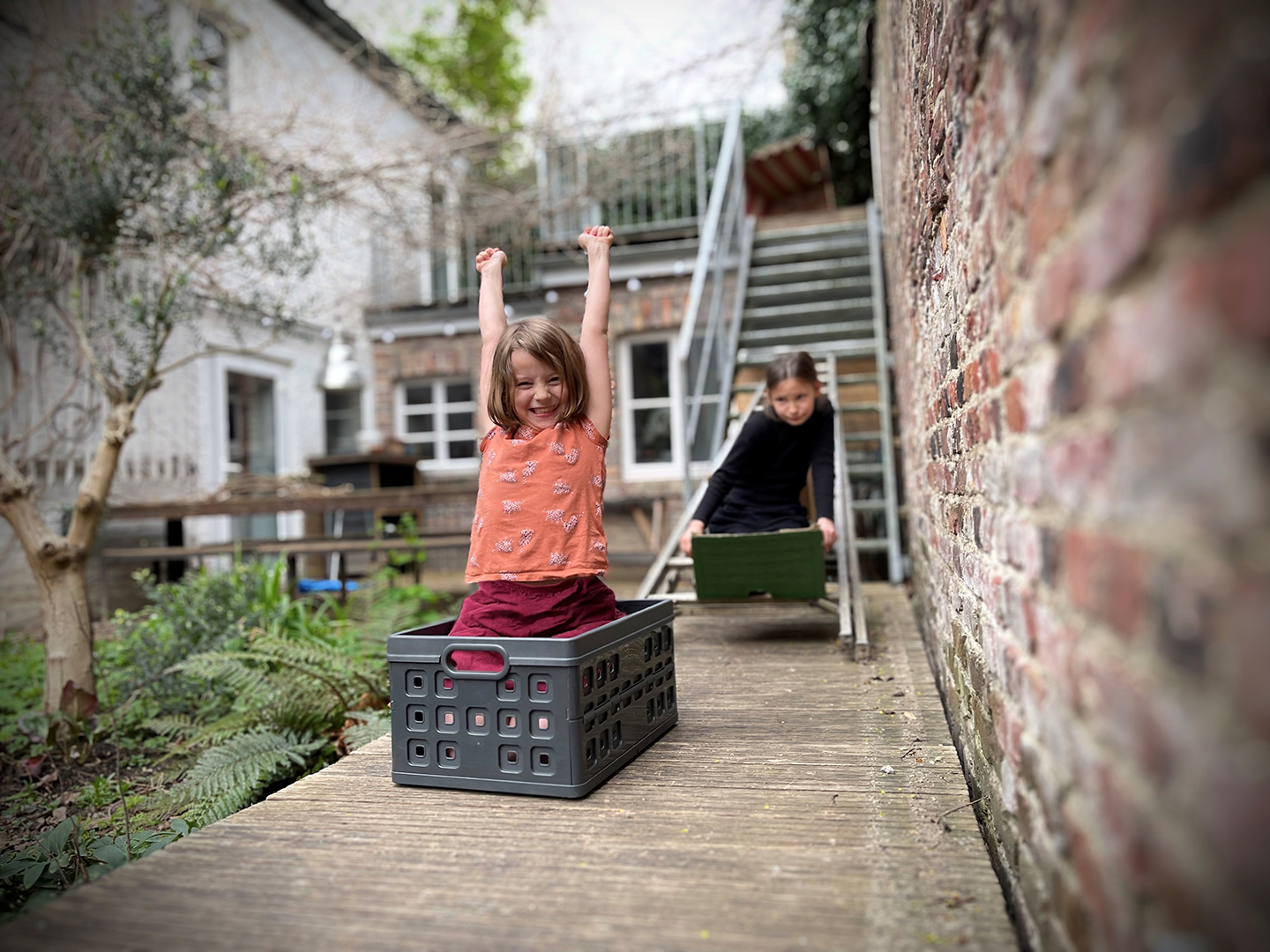Study
More reusable solutions for plastic packaging
For plastic waste to be reduced and a circular economy to function, reusable systems are essential. Researchers from Fraunhofer UMSICHT and Fraunhofer IML, who collaborate in the Fraunhofer Cluster of Excellence Circular Plastics Economy CCPE, have compared three plastic-based reusable systems with their single-use alternatives for the Stiftung Initiative Mehrweg (SIM). The result: reusable is superior to single-use in 14 of the 17 categories studied and offers great potential for the success of a circular economy. What is missing are clear political framework conditions and the implementation of the existing waste hierarchy, which actually prioritizes reusables.
Only 13 percent of the plastics produced in Germany are made from recyclates, and in the packaging sector the figure is as low as 11 percent. Moreover, only a very small proportion is reused for its original purpose, with cascade uses (downcycling) generally dominating. In addition, Germany is one of the world's largest exporters of plastic waste. The EU and the German government have reacted to the plastic problem: The production of some single-use plastic products has been banned, a recycled content quota has been imposed on PET beverage bottles, and since the beginning of 2022, the mandatory deposit on single-use beverage bottles has been extended to all types of beverages. "The EU's Green Deal and Taxonomy Regulation set the right direction for sustainable business. From our point of view, however, there is the following problem: The waste hierarchy, which has been regulated in European waste legislation for decades, defines an order of priority for the generation and handling of plastic waste. In this hierarchy, recycling is downstream of multiple use. However, the implementation of this waste hierarchy has hardly taken place so far", explains Jürgen Bertling from the Fraunhofer Institute for Environmental, Safety and Energy Technology UMSICHT and project manager of the study.
Circularity, performance and sustainability
For plastic packaging in particular, mainly single-use solutions currently exist. Some reusable systems can be found in the B2B sector, e.g. in the automotive industry and for transporting fruit and vegetables. In the B2C sector, they tend to be the exception, such as transport boxes for food from regional farmers. The aim of the current study by Fraunhofer CCPE on behalf of the Stiftung Initiative Mehrweg was therefore to evaluate plastic-based reusable packaging systems, compare them with single-use alternatives and derive recommendations for strengthening the circular economy. To this end, the researchers analyzed the three reusable systems fruit and vegetable crates (already established in the trade), plant trays (in preparation for large-scale use) and coffee-to-go cups (introductory phase). They were compared with the respective corresponding single-use solutions in the three areas of circularity, performance and sustainability in a total of 17 subcategories. The result: reusable offers clear advantages for all three demonstrators studied - from material efficiency and lower plastic emissions to better product protection thanks to more robust designs.
For companies, reusable systems initially mean a higher capital outlay due to the establishment of logistics and return systems, storage areas and cleaning technology. In the long term, however, reusable systems prove to be less expensive and more resource-efficient, they strengthen regional economies and contribute to increased technological sovereignty. "The decisive factors for the advantageousness of a reusable system are above all the number in circulation and the distribution structure: the higher the number in circulation and the lower the transport distances, the better reusable performs compared to single-use. Decentralized pool solutions are therefore elementary here," explains Kerstin Dobers from the Fraunhofer Institute for Material Flow and Logistics IML, co-author of the study. Compared with other packaging materials such as paper or wood, plastic has a large number of advantageous properties - light, durable, chemically inert - and thus remains the material of choice for numerous applications, especially in reusable systems.
Consistently implement waste hierarchy and optimize reusables
This report is aimed equally at policymakers, associations, plastic packaging manufacturers and suppliers of reusable pool solutions. The team of authors concludes by recommending two key measures: First, ways to consistently implement the waste hierarchy should be identified and promoted. Single-use systems should only come into play once the opportunities for multiple use have been exhausted. ”This result of the study is in contrast to today's reality in the packaging market. There must be new political framework conditions that sanction the bypassing of this order. At the same time, incentive systems should be created for companies to increasingly establish reusable solutions for plastics," says Jürgen Bertling. He also calls for the waste hierarchy to be reviewed by a panel of experts and then strictly implemented in practice. It also makes sense, he says, to focus less on recycling rates and instead specify demanding recyclate percentages in production.
According to Kerstin Dobers, the second key measure is to exploit the existing optimization potential for reusable solutions so that their advantages are further expanded and possible deficits are eliminated: ”Certainly, numerous innovations are still possible in reusable solutions, especially in online retailing or in the takeaway sector. Good solutions are characterized by the fact that the packaging is modular and its volume can be reduced (nestable or foldable). Here, framework conditions for national and international standardization are needed to exploit the ecological potential of reusable systems.” In addition, environmental symbols (labels) for identifying reusable and disposable containers must be unambiguous. Associations, in particular, are needed here.
Last modified:
 Fraunhofer Institute for Environmental, Safety and Energy Technology UMSICHT
Fraunhofer Institute for Environmental, Safety and Energy Technology UMSICHT